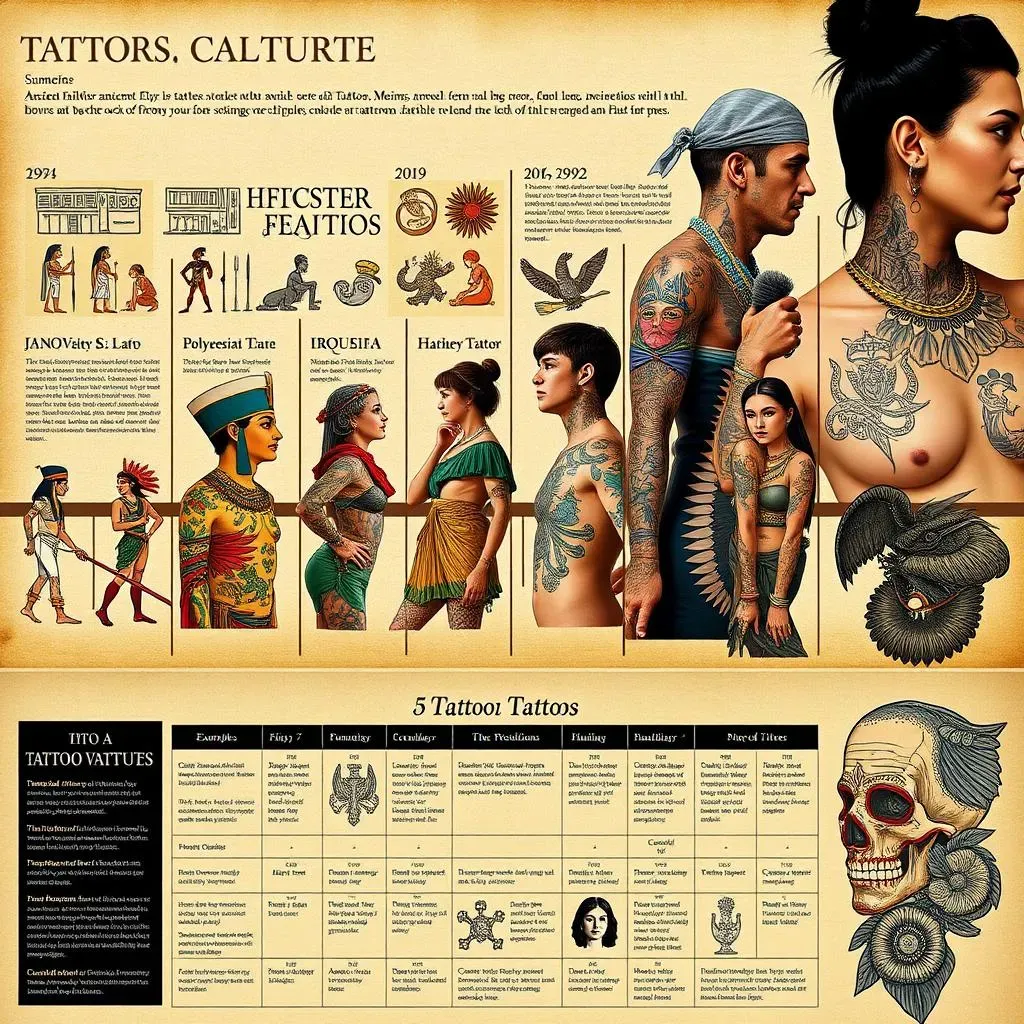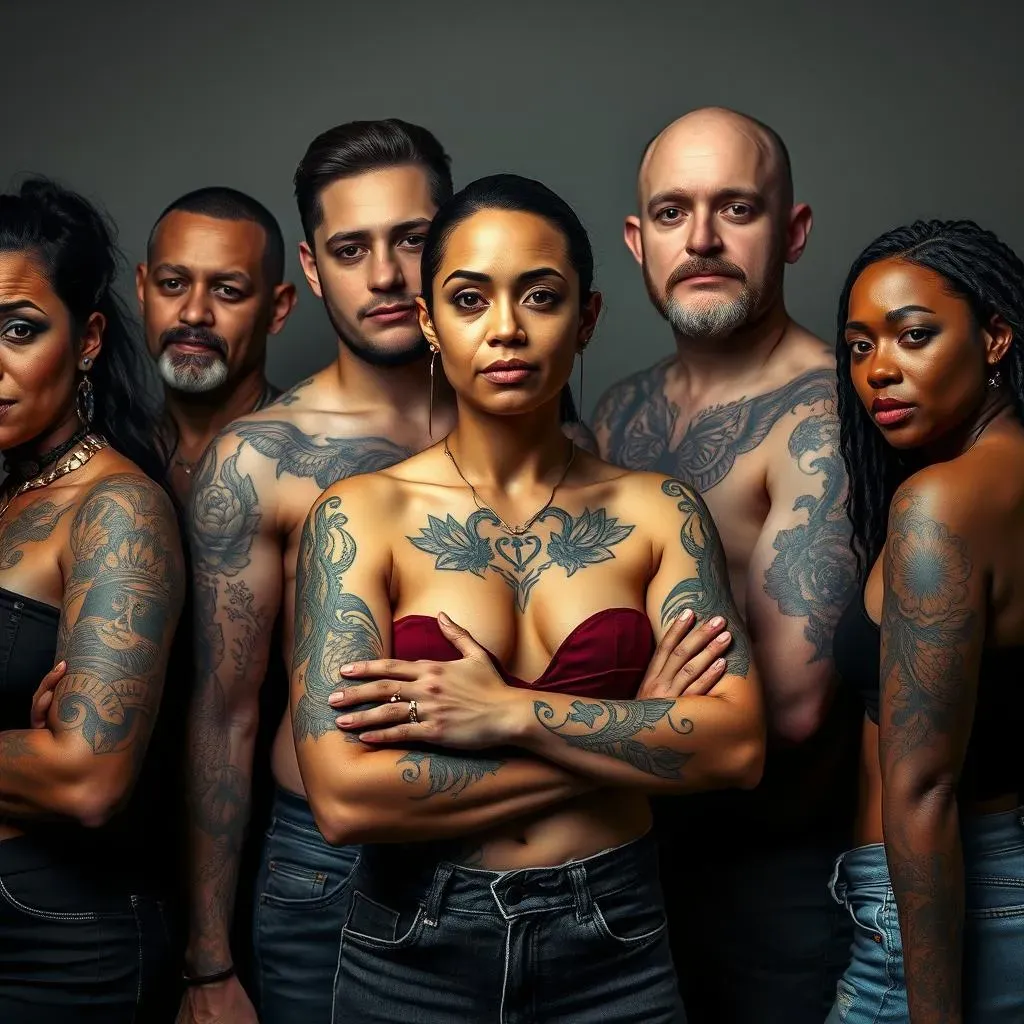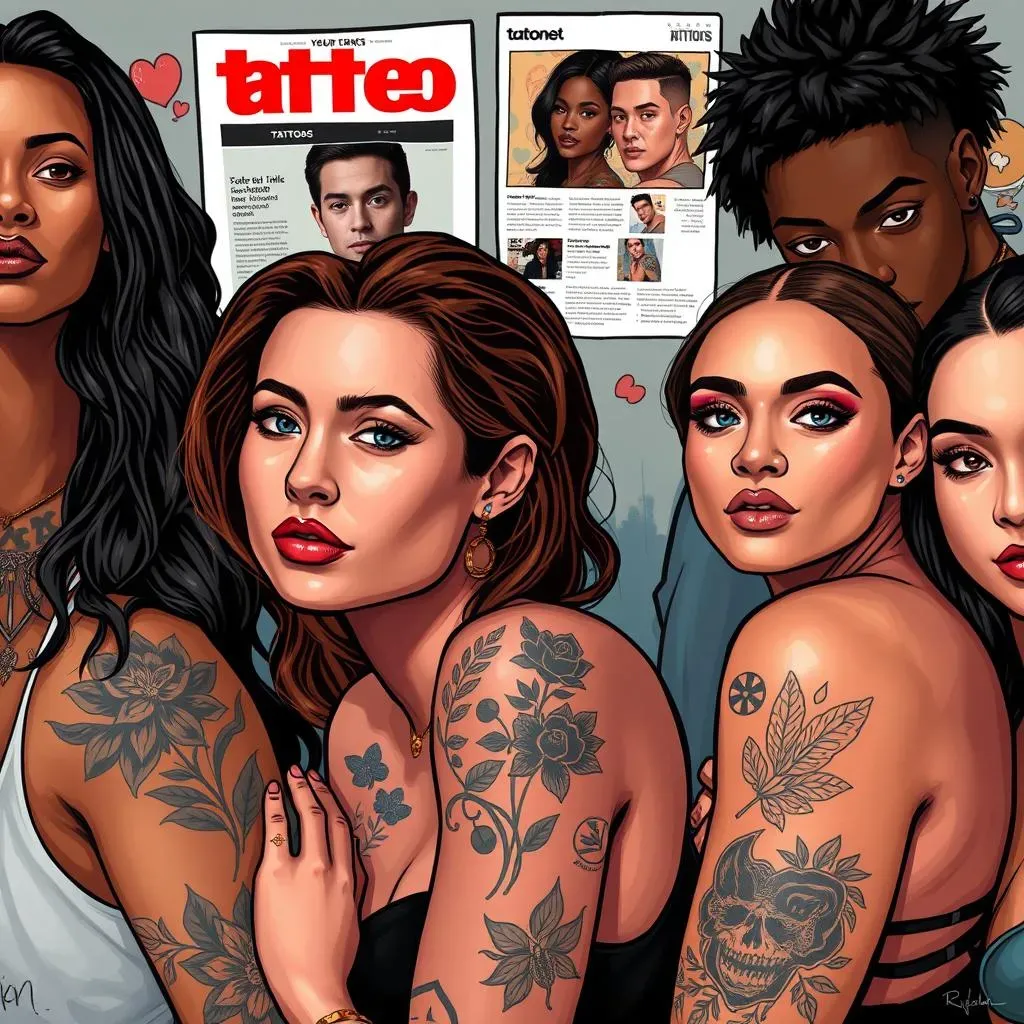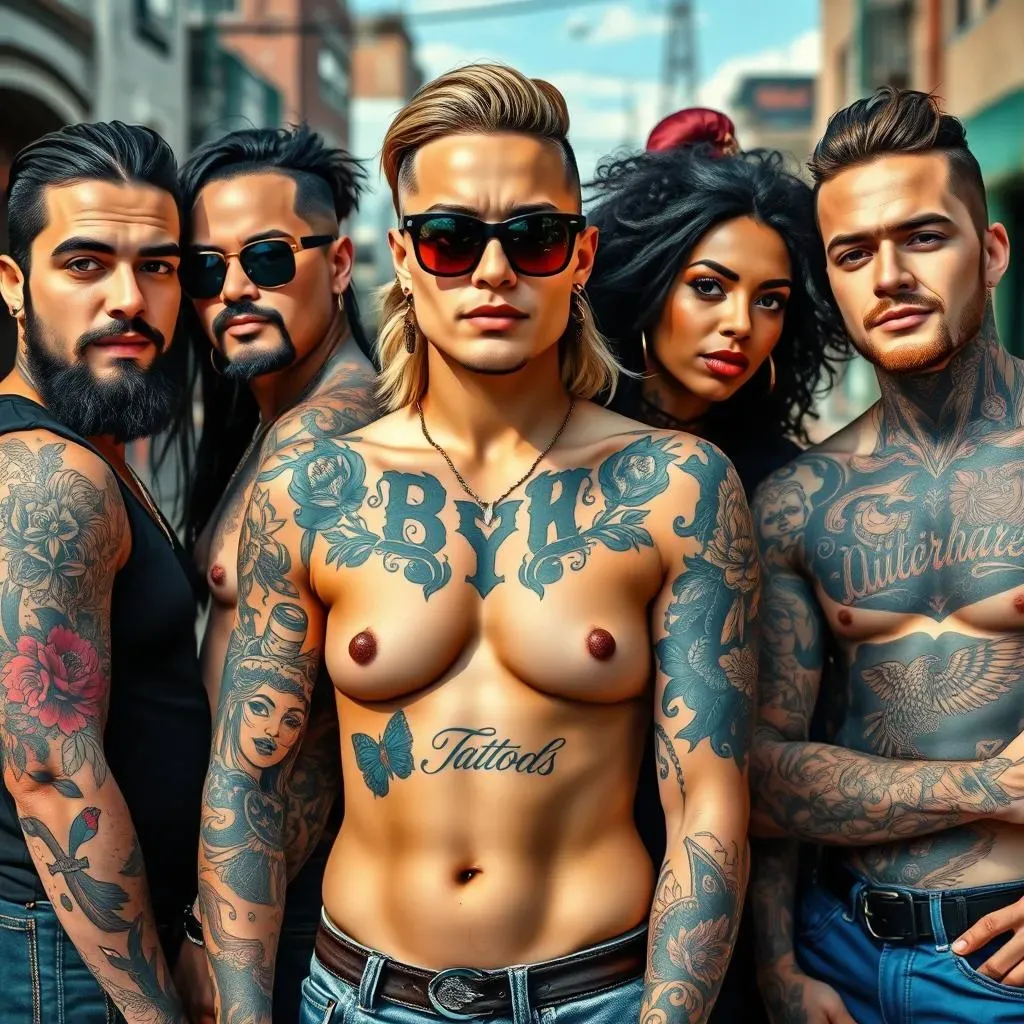Table of Contents
Ever wondered why tattoos have become such a mainstream phenomenon? Tattoos have shed their counter-cultural skin and emerged as a prominent form of self-expression, adorning bodies from celebrities to everyday folks. But why are tattoos fashionable? This article dives deep into the captivating world of ink, tracing the evolution of tattoo culture, exploring its connection to identity, and examining the powerful influence of media and trendsetters. We'll unravel the reasons behind the enduring appeal of tattoos as a fashionable statement, from ancient traditions to modern-day masterpieces. Join us as we explore the artistry, cultural significance, and personal stories that make tattoos more than just skin deep. Get ready to discover the driving forces behind the widespread acceptance and celebration of tattoos in today's fashion landscape. Prepare to be inked with knowledge!
The Evolution of Tattoo Culture and Fashion
The Evolution of Tattoo Culture and Fashion
Ancient Origins and Ritualistic Significance
Tattoos weren't always about fashion statements. The practice stretches back millennia, with evidence found in ancient civilizations across the globe. From the Egyptians and the Polynesians to the tribes of the Amazon, tattoos served as powerful symbols of status, religious affiliation, and tribal identity. Think about Ötzi the Iceman, dating back to 3300 BCE, whose body was adorned with simple tattoos believed to have had therapeutic purposes. These weren't whimsical designs; they were deeply embedded in the cultural and spiritual fabric of these societies.
The tools and techniques varied wildly, from hand-tapped methods using sharpened bones and natural pigments to more sophisticated approaches involving thorns and dyes. Each mark told a story, a visual representation of an individual's journey and place within their community. It's a far cry from the tattoo parlors we see on every corner today, but it lays the foundation for the evolution of tattoo culture.
The Sailor's Mark and the Rise of Western Tattooing
Fast forward to the age of exploration, and we see tattoos making their way into Western culture, largely through the travels of sailors. Exposed to the tattooing traditions of Polynesian islands, sailors brought these practices back to Europe and America, popularizing them among their ranks. These early Western tattoos were often simple designs: anchors, nautical stars, and swallows, each carrying its own symbolic meaning within the maritime world. The tattoos served as a form of personal storytelling.
Tattooing began its slow creep into mainstream society. Tattoo parlors started popping up in port cities, catering primarily to sailors and other working-class individuals. It was still a far cry from being considered "fashionable," but it was a crucial step in its journey.
Era | Dominant Tattoo Styles | Social Perception |
|---|---|---|
Ancient Civilizations | Tribal markings, symbolic patterns | Ritualistic, spiritual, status-related |
Age of Exploration | Nautical themes, simple designs | Associated with sailors and working class |
From Subculture to High Fashion: The Modern Tattoo Renaissance
The 20th and 21st centuries witnessed a dramatic shift in the perception of tattoos. Once relegated to the fringes of society, tattoos have exploded into the mainstream, gracing the bodies of celebrities, athletes, and everyday individuals alike. Several factors contributed to this transformation.
Increased visibility in media, the blurring lines between art forms, and a growing desire for individual expression have all played a significant role. What was once a symbol of rebellion is now a canvas for personal stories, artistic expression, and, yes, even fashion.
The rise of tattoo reality shows, celebrity endorsements, and the sheer artistry of modern tattoo artists have catapulted tattoos into the realm of high fashion. People now see them as wearable art, a way to curate their own personal brand and make a statement without saying a word.
Tattoos as a Form of SelfExpression and Identity
Tattoos as a Form of SelfExpression and Identity
Inking Your Story: Personal Narratives on Skin
Tattoos offer a unique avenue for expressing personal narratives. Unlike clothing or accessories that can be easily changed, tattoos become a permanent part of your being, a visual representation of your beliefs, experiences, and values. Think of a survivor getting a phoenix tattoo to symbolize their resilience, or a traveler mapping their adventures with coordinates etched onto their skin. These aren't just random designs; they're carefully chosen symbols that tell a story, a story that the wearer carries with them every day.
For many, tattoos are a way to reclaim their bodies and identities, especially after trauma or significant life changes. They're a declaration of self, a way to say, "This is who I am, and this is what I've been through." In a world where we're constantly bombarded with external messages, tattoos offer a powerful way to define ourselves on our own terms.
Symbolism and the Language of Ink
Beyond personal narratives, tattoos also tap into a rich world of symbolism. From ancient symbols like the ouroboros (representing eternity) to modern designs like geometric patterns, each image carries its own unique meaning. The choice of symbol, placement, and style all contribute to the overall message, creating a visual language that speaks volumes without uttering a word. Consider the popularity of animals in tattoo designs. A wolf might represent loyalty and family, while a butterfly could symbolize transformation and freedom. These symbols resonate with us on a deep, subconscious level, allowing us to communicate complex ideas and emotions through our body art.
Also, the act of choosing a tattoo design is often a deeply personal and introspective process. It requires you to consider what's important to you, what you want to express, and how you want to be seen by the world. In that sense, getting a tattoo is an act of self-discovery, a journey into your own psyche. It's a way of solidifying your identity and declaring it to the world.
Symbol | Common Meaning |
|---|---|
Phoenix | Rebirth, resilience |
Wolf | Loyalty, family, strength |
Butterfly | Transformation, freedom |
Anchor | Stability, hope |
The Influence of Celebrities and Media on Tattoo Trends
The Influence of Celebrities and Media on Tattoo Trends
Celebrities have undeniably amplified the fashion aspect of tattoos. When a prominent figure like a musician, actor, or athlete sports a new piece of ink, it instantly gains attention and often sparks a trend. Think about the impact of Angelina Jolie's various tattoos, each carrying a personal story, or the influence of Post Malone's facial tattoos, which have challenged conventional beauty standards. These visible displays of body art normalize and popularize tattoos, making them more accessible and appealing to a wider audience. Media outlets, from magazines to social media platforms, further fuel these trends by showcasing celebrity tattoos, dissecting their meanings, and inspiring countless individuals to follow suit.
The media plays a crucial role in shaping perceptions and driving trends. Tattoo reality shows, for example, offer a behind-the-scenes look at the artistry and personal stories behind tattoos, demystifying the process and highlighting the emotional connection people have with their ink. Social media platforms like Instagram and Pinterest have become virtual tattoo galleries, showcasing diverse styles and artists, and allowing users to easily discover and share inspiration. This constant exposure to tattoos in the media has normalized them, transforming them from a taboo subject to a mainstream form of self-expression.
Celebrity | Notable Tattoo(s) | Impact on Trends |
|---|---|---|
Angelina Jolie | Coordinates of children's birthplaces | Popularized meaningful, personal tattoos |
Post Malone | Facial tattoos | Challenged conventional beauty standards |
Rihanna | Various delicate and symbolic tattoos | Influenced minimalist and feminine tattoo styles |
Why Tattoos Remain a Fashionable Statement Today
Why Tattoos Remain a Fashionable Statement Today
Individuality and Self-Expression in a Mass-Produced World
In a world saturated with mass-produced goods and homogenized trends, tattoos offer a powerful antidote: individuality. They allow people to curate their bodies as unique canvases, showcasing their passions, beliefs, and personal stories in a visually striking way. Forget fleeting fashion fads; tattoos are a commitment, a declaration of self that transcends seasonal trends. They're a way to stand out from the crowd, to express your authentic self in a world that often pressures us to conform. In an era defined by personal branding and self-curation, tattoos become an integral part of one's identity, a visible manifestation of their inner world.
It's about more than just aesthetics; it's about taking ownership of your body and making a statement about who you are. Tattoos allow individuals to reclaim their bodies as personal galleries, displaying artwork that resonates with their souls. They're a form of wearable art that tells a story, sparks conversation, and connects people through shared experiences and meanings. In a world that often feels impersonal, tattoos offer a way to connect with others on a deeper level, sharing stories and building communities through the language of ink.
The Ever-Evolving Art Form: Innovation and Creativity in Tattooing
The world of tattooing is far from stagnant; it's a constantly evolving art form, fueled by innovation and creativity. From the rise of hyper-realism to the resurgence of traditional styles, tattoo artists are pushing the boundaries of what's possible with ink. New techniques, pigments, and technologies are constantly emerging, allowing artists to create increasingly intricate and visually stunning designs. This constant evolution keeps tattoos fresh and exciting, ensuring they remain a relevant and fashionable form of self-expression.
The artistry involved is undeniable. Many tattoo artists are classically trained painters and illustrators, bringing their skills and expertise to the realm of body art. They're not just copying designs; they're creating original masterpieces that reflect the unique personalities and stories of their clients. The collaborative process between artist and client is also a key factor in the enduring appeal of tattoos. It's a partnership, a journey of self-discovery and artistic expression that results in a piece of art that is both deeply personal and visually stunning.
Conclusion: The Enduring Allure of Tattoos
From rebellious roots to runway trends, the journey of tattoos showcases a fascinating evolution. We've explored how tattoos transitioned from subculture symbols to mainstream fashion statements, driven by self-expression, celebrity influence, and a growing appreciation for body art. As long as individuals seek unique ways to tell their stories and connect with their identities, tattoos will likely remain a relevant and fashionable form of personal expression. The story of ink is far from over; it continues to evolve with each new design, each personal narrative, and each generation that embraces the art of tattooing.